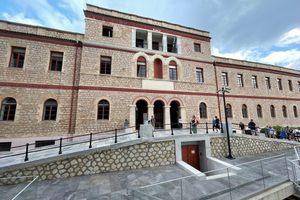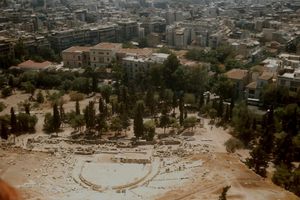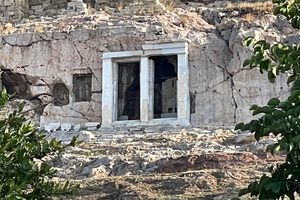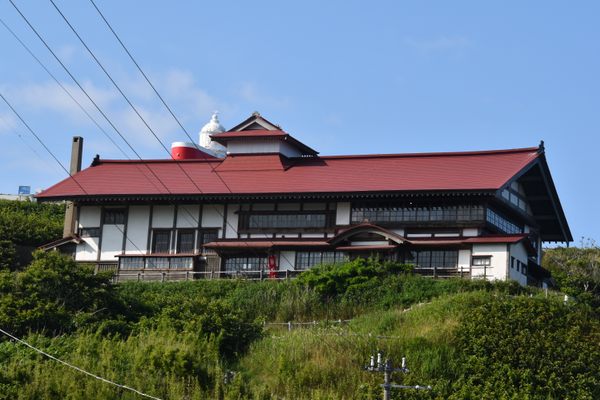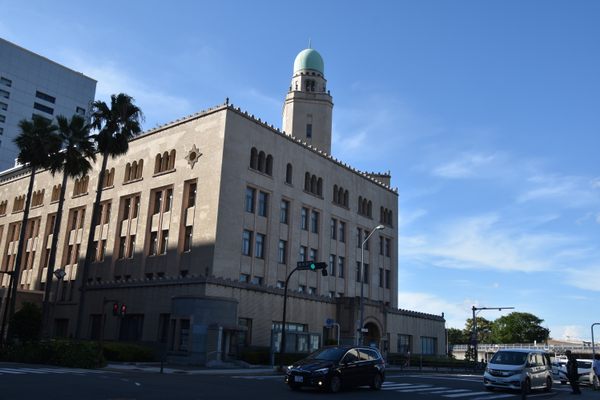About
Proclus Lycaeus, the last major ancient Greek philosopher and successor to Plato, was born in Constantinople in 412. After first studying philosophy, he then decided to become a lawyer. While successfully practicing law, he decided philosophy was his true calling, and eventually moved to Alexandria to further his studies.
He eventually outgrew the instruction available in Alexandria and moved to Athens. Upon his arrival in Athens, he began studying at the Platonian Academy, the pre-eminent academy for philosophy in the world. After several years of study, Proclus was named the Head of the Academy. Proclus led the academy for almost 50 years until his death in 485. While leading the academy, Proclus lived in Makrygianni, an area that sits on the south slope of the Acropolis and was home to elite Athenians.
The original Dionysiou Areopagitou Street in Makrygianni was constructed in 1857 and ran from the Temple of Olympian Zeus to Apostolou Pavlou Street. In 1955, the area of the street between the Theater of Dionysus and Odeon of Herodes Atticus was rerouted and moved further south. In 2003, the street was pedestrianized as part of the infrastructure improvements for the Games of the XXVIII Olympiad. Excavations during these two projects revealed the ruins of several buildings, one of which was a late Roman villa identified as the home of Proclus. The villa was also known as House Chi.
The ruins showed the house was rectangular and capped with a semicircular arch on the north side. It was 104 feet (32 meters) wide with an east to west orientation. The house consisted of one large main room surrounded by smaller rooms. The main room was covered with decorative mosaics, while the floor was paved with mosaics in geometric patterns.
Both excavations were limited due to governmental time restrictions and the fact that the south portion of the villa was sitting underneath modern buildings. Artifacts found during the excavations included an alter, two votive reliefs, a fragment of an inscription that included the words “σοφίην” and “βίοτον,” a marble head of a young man, a headless torso of Isis, and the tomb of a piglet. Evidence from the site determined it was abandoned around the 6th-century.
Due to strict Greek laws protecting archaeological sites and artifacts, a plan was developed to protect the site. It called for the site to be carefully filled, covered with decomposed granite, and a thin foundation base was placed where the villa walls were located. This allows the public to admire and better understand the site.
Related Tags
Know Before You Go
Many of the artifacts from the two excavations are on display in the Acropolis Museum. The site is on public space therefore available for viewing 24-hours a day. While the area is currently well lit at night, viewing is much better during daylight hours. The site also has excellent views of many Athenian landmarks both during the day and night.
Community Contributors
Added By
Published
August 17, 2020
























